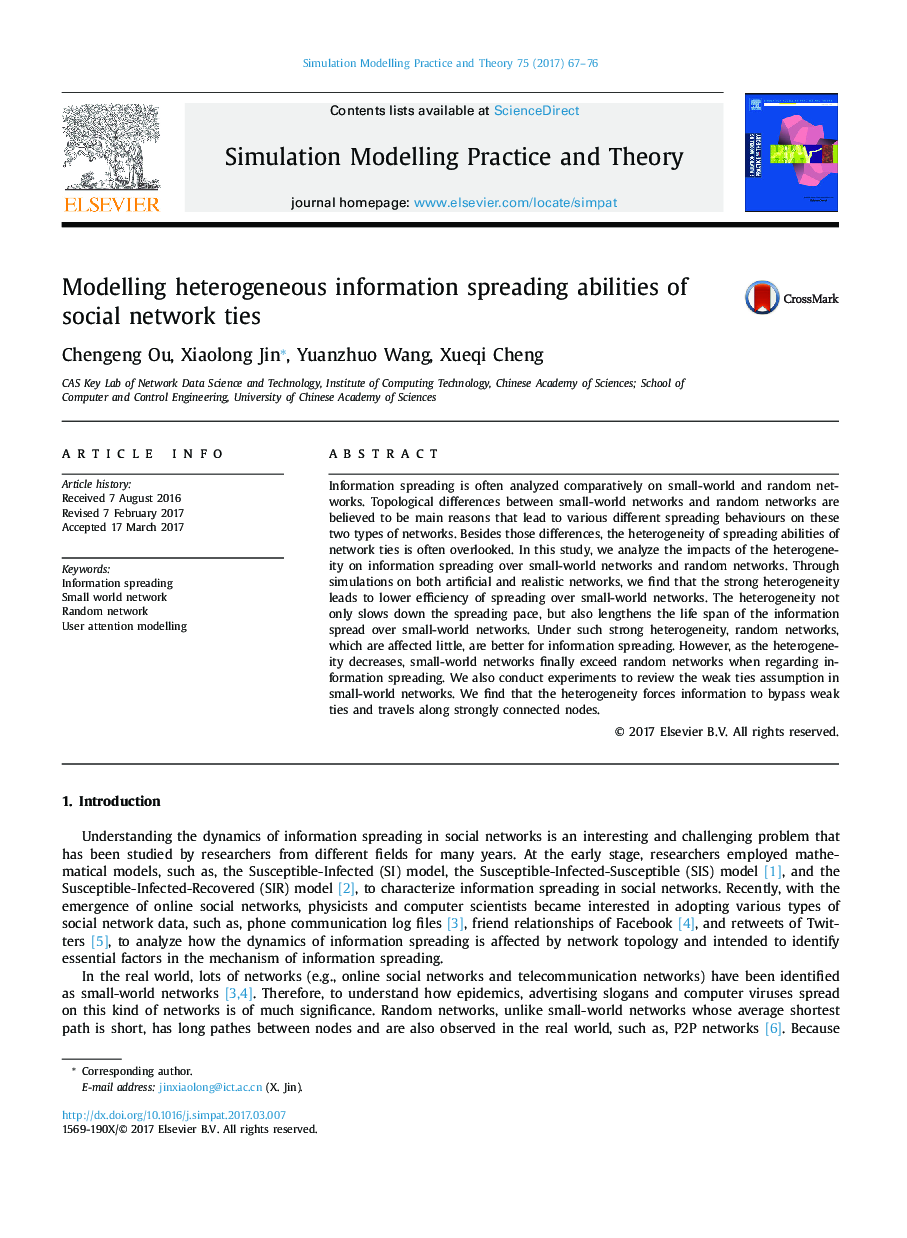| Article ID | Journal | Published Year | Pages | File Type |
|---|---|---|---|---|
| 4962626 | Simulation Modelling Practice and Theory | 2017 | 10 Pages |
Abstract
Information spreading is often analyzed comparatively on small-world and random networks. Topological differences between small-world networks and random networks are believed to be main reasons that lead to various different spreading behaviours on these two types of networks. Besides those differences, the heterogeneity of spreading abilities of network ties is often overlooked. In this study, we analyze the impacts of the heterogeneity on information spreading over small-world networks and random networks. Through simulations on both artificial and realistic networks, we find that the strong heterogeneity leads to lower efficiency of spreading over small-world networks. The heterogeneity not only slows down the spreading pace, but also lengthens the life span of the information spread over small-world networks. Under such strong heterogeneity, random networks, which are affected little, are better for information spreading. However, as the heterogeneity decreases, small-world networks finally exceed random networks when regarding information spreading. We also conduct experiments to review the weak ties assumption in small-world networks. We find that the heterogeneity forces information to bypass weak ties and travels along strongly connected nodes.
Related Topics
Physical Sciences and Engineering
Computer Science
Computer Science (General)
Authors
Chengeng Ou, Xiaolong Jin, Yuanzhuo Wang, Xueqi Cheng,
